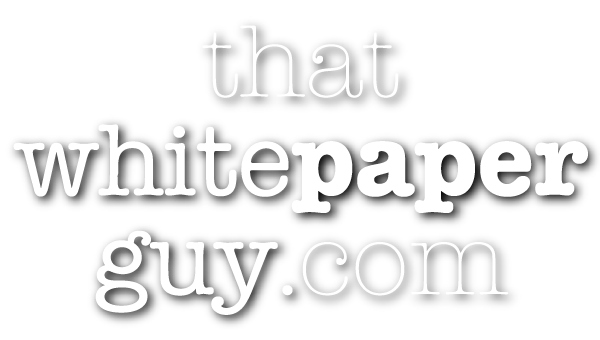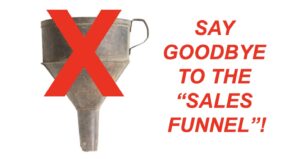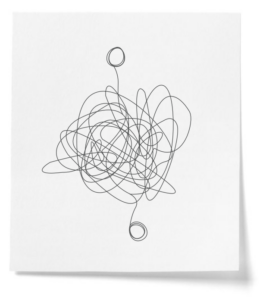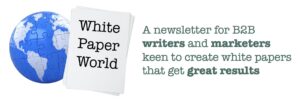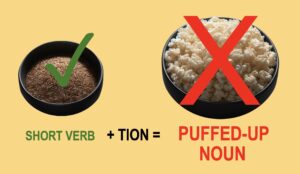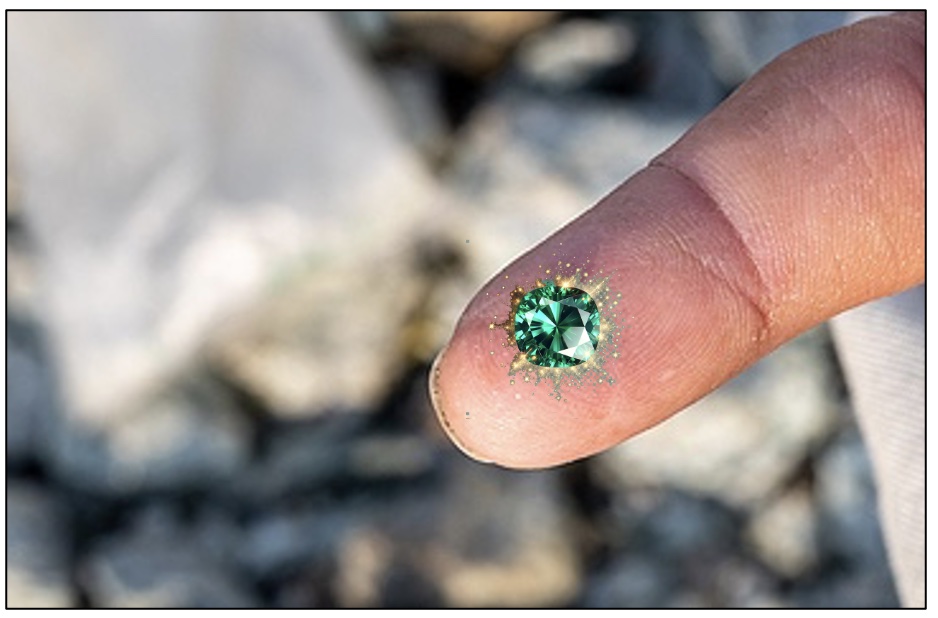
White Paper World 35: January 12, 2024
- This just in: Plain language rules, even in healthcare
- Quick tip: To find the gem, wash away the muck
- Big idea: Let’s get rid of the sales funnel
- Need help with your next white paper?

This just in: Plain language rules in healthcare (and every other sector)
A recent study found that 4 out of 5 healthcare executives prefer a clear, conversational writing style.
And three times as many (68% vs 22%) would download a white paper with a plain language teaser.
I admit, healthcare is not my speciality.
But every time I’ve written for a healthcare company, I’ve heard that their audience reads medical journals. They expect to hear lots of medical jargon and see the same rather bland two-column format.
The recent research by Aha Media Group challenges that perspective.
After surveying 150 healthcare executives, they concluded:
“Healthcare professionals want—and need—marketing materials that are straightforward, streamlined, and organized… to convince them that you’re a trustworthy business worth their time.”
How do you do that?
The report recommends using tried-and true techniques, such as:
- Using shorter sentences
- Using active voice
- Removing jargon
- Making text easy to scan
- Chunking text into manageable parts
This is not news to any seasoned white paper writer.
And I believe this applies to any field, no matter how technical: finance, insurance, IT, or whatever.
Don’t let your message get lost in long, fancy words that don’t say much.
There’s an article from Content Marketing Institute here:
https://contentmarketinginstitute.com/articles/health-care-plain-language-study/
Or the whole study at https://hello.ahamediagroup.com/plain-language-final
Quick tip: To find the gem, wash away the muck
One problem I often see in white papers is over-long quotes from sources.
Lengthy quotes can easily slow down your narrative and distract from the point you’re trying to make.
If you see a quote that runs two or three paragraphs long, you can be pretty sure the writer included too much.
Your goal as a writer is to sift through all your research and pluck out only the shiniest words to use as direct quotes.
Then condense and paraphrase the rest to keep the story moving. That’s not easy, but it pays off.
Notice the example in the item above: I quoted only 24 words from an 18-page report. But that was enough, don’t you think?
That reminds me of mining emeralds
Gemstone miners face much the same problem.
Depending on the operation, miners use everything from bamboo baskets to modern earth-moving equipment to gather gravel.
Then they run vast amounts of water over the muck. This washes away all the earth, leaves, and silt.
The remaining material is sifted and screened. And a human watches closely for any sparkly stones to pull out.
Those finds are exceedingly rare.
For example, one large emerald mine in Colombia goes through 60,000 pounds of material to find 1.3 pounds of rough emeralds.
Emeralds are rare. That’s what makes them valuable.
And it’s the same with your best quotes.
You may interview someone for a whole hour, and get a lot of valuable background… but only one or two quotable quotes.
Your job as a writer is to wash away the muck to reveal those shining nuggets.
Anything else is quoting too much.

Some examples from a recent white paper
For one white paper last year, I scanned through hundreds of pages of reports and interviewed 15 experts.
As you can imagine, that gave me perhaps half a million words of raw material.
And I had to condense all that down to a few thousands words.
Here are three nuggets I mined from that input.
“Innovation in the smartphone industry seems to have reached its peak.”
I took this short soundbite from a lengthy report on Europe’s largest telecom show.
“Collecting map data has always been hard.”
I drew this authoritative statement from a Zoom interview.
Then I used more quotes from this expert later, but this statement set the tone for the whole discussion.
“Competition, not a walled garden, leads to the best outcomes.”
I took this choice quote from a 200-page report on Apple’s iPhone business.
Notice how each of those is short and pithy, around 10 words each. You can go longer, of course, up to 20 or even 30 words from a snappy speaker.
Just keep washing away the muck of words until what remains is the prize gemstone you want.
P.S. ChatGPT is terrible at this
Whenever I’ve asked ChatGPT to review a transcript and find the most quotable quotes, it pulls out huge gobs of words and sails right past the sound bites.
So I believe this is yet another editorial skill that people can still do better than AI.
Big idea: Let’s get rid of the sales funnel
Now that the concept of the “sales funnel” is more than 100 years old, let’s retire it for good.
And I’ve got a fresh metaphor to suggest in its place.
It’s my favorite of three other possibilities, each one more realistic and more useful for B2B marketers and writers.
What’s wrong with the sales funnel?
To be honest, the sales funnel:
- Is too simple and linear
- Doesn’t show a complex buying process
- Doesn’t show repeat customers
- Doesn’t show how content marketing can slowly engage a prospect for months… or lead to an instant sale
And worst, it’s all from the vendor’s point of view. It doesn’t consider customers anything more than drips of revenue.
Don’t buyers deserve more respect?
Don’t you hate it when some vendor asks for your e-mail and you know you’re about to start getting flooded by their pushy sales messages?
That sales funnel has had its day. It’s time to toss it in the recycling bin and start using a fresh metaphor.
Possible metaphor #1: The messy middle
This metaphor came from a 2020 Google white paper.
That paper is an intriguing read with lots of research plus this sketch of the messy middle.
Point A at the top is connected to point B at the bottom by a tangled bunch of string that represents the decision-making process.
They did a more polished diagram too, but I prefer this one. It really does capture how we all operate.
But I’m not sure how much traction this metaphor ever gained.
Perhaps it was just too messy for business people to admit it was true.
Possible metaphor #2: The flywheel
Martech company Hubspot came up with a new metaphor: the flywheel.
A flywheel is a weight that traps inertia to keep some part of a machine spinning. The better the balance and the lower the friction, the more effective the flywheel.
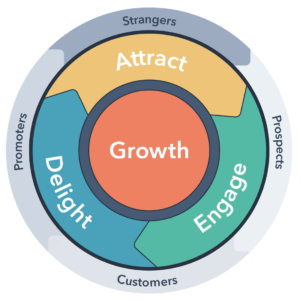
Source: Hubspot, 2018
Hubspot’s flywheel captures the ongoing process of attracting strangers, engaging prospects, and delighting buyers.
And some customers go on to promote the company with referrals, online comments, glowing reviews, and word-of-mouth.
This metaphor is cool. It’s realistic.
One problem: It’s all about relentless marketing to keep the wheel spinning. Customers only there to deliver “Growth.”
I don’t know about you, but I unsubscribed from Hubspot years ago.
Who wants to get three e-mails from the same company every day?
And I suspect their never-ending flywheel supports “grind culture” and the more-is-better philosophy of content marketing.
My favorite: The customer journey
I’ve been using “customer journey” for some years now, and I think it works well.
The simple graphic above shows a blacktop road curving between green grassy meadows.
And the customer journey does two things so well that I like it best.
Benefit #1: This puts the customer in the driver’s seat
The metaphor works from the buyer’s point of view.
Far better than a funnel, this suggests the uncertainty of a trip where you don’t know exactly where you’re going.
- The journey can get interrupted.
- The driver can park for a while or turn off one road on to another.
- They can get lost or run out of gas.
- They can make a U-turn and go back the same way they came.
All the way, the buyer is in the driver’s seat.
The seller is there to help them along their journey. And not like a backseat driver barking out commands!
Instead, the seller should be like the AAA‘s Premier service. Toss in roadside assistance and free towing while you’re at it.
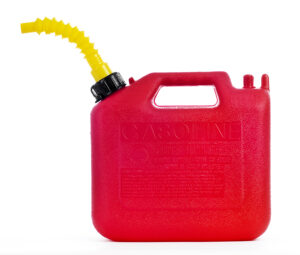
If a customer runs out of gas, the vendor should rush over with a red gas can filled to the brim. On the house.
If a customer needs directions, the vendor should give them a map that shows way more than the standard tourist attractions.
Maybe include all the picnic stops or ice cream shops along the way.
And if a customer pulls into a motel exhausted after a 12-hour drive, the vendor should just leave them alone.
Don’t start pounding on their door at 6 AM to hustle them back on the road.
You don’t need to. It’s their journey. Let them travel at their own pace.
Benefit #2: This maps perfectly to the three flavors of white papers
Every journey has three main parts, right?
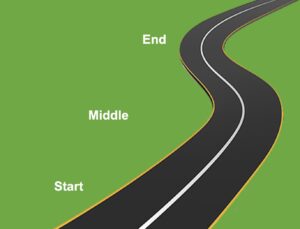
Those are the start, the middle, and the end.
And guess what? Each part of the journey calls for a different type of white paper.
At the start, a problem/solution (chocolate) white paper suggests a better way to solve a nagging business problem.
This is like a putting some gas in a prospect’s tank, helping them get ready to start their journey.
In the middle, a numbered list (strawberry) explores some related issue, question, or topic.
This is like giving a prospect a travel guide, so they can explore some highlights and notice some details along their way.
Near the end, a backgrounder (vanilla) describes the features and benefits of your offering.
This is like showing a prospect a listing for your destination, so they can compare choices and pick the best one for them.
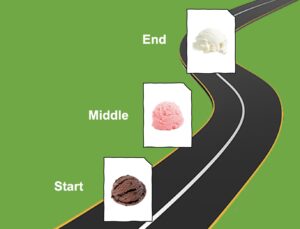
At every stage of the journey, if you provide the right information, everybody’s happy.
This is why I no longer use the term “sales funnel.” Instead, I always say “customer journey.”
What do you think? Can the customer journey replace the rusty funnel? Can we all agree not to use that tired-out phrase in 2024?
P.S. If you’re unclear about the three flavors of white papers, see my handy infographic.

Need help with your next white paper?
- Not sure where to start?
- Wondering how to pull together everything you need?
- Worried about managing such a big project?
Get a blueprint!
After working on 316 white papers, I can help you sketch out your next white paper in just a few minutes.
Whether you’re a marketing manager or a B2B content writer, getting a White Paper Blueprint is as easy as 1-2-3:
- Set up a one-hour Zoom with everyone who needs to review your paper.
- During the Zoom, I guide your team through a set of key questions.
- I send you a detailed blueprint for your white paper.
But wait, there’s more!
I won’t just hand you a blueprint and disappear. I’ll stay in touch as your project takes shape.
You can ask me any questions that pop up as you go along. That way, I can help you put up the temporary scaffolding you need to build your paper properly.
And for a modest added fee, I can even read and comment on your drafts. That’s like inviting me on-site to do an inspection.
In all these ways—blueprint, scaffolding, and on-site inspection—I can help make sure your project runs smoothly, gets published successfully, and generates the results you need.
So if you need some help getting started on your next white paper, drop me a line at gordon @ thatwhitepaperguy.com
And here’s a special gift to my subscribers: If you mention this newsletter, I’ll reduce your fees by 25%.
That will bring down your fee from $975 to $725—so you save $250.
Most people agree: That’s a small price to pay to make sure your white paper turns out great!
Happy New Year!
I wish you all the best that life can bring in 2024, and great success with all your writing projects.
And in every issue of this newsletter, I’ll try to bring you helpful news and views.
Please pass this along to anyone you think would appreciate it.
You can see all the previous issues of White Paper World here:
www.thatwhitepaperguy.com/newsletters/
And to see every future issue, make sure to subscribe here:
www.thatwhitepaperguy.com/subscribe/

Gordon Graham
That White Paper Guy
